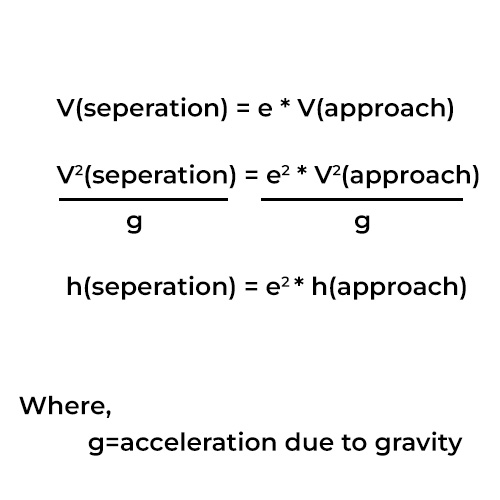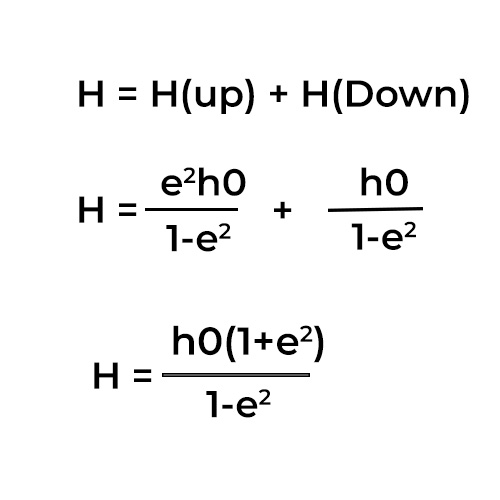Bouncing ball Total distance
Introduction
In this section, we will deduce the formula for the total distance covered by a bouncing ball before coming to a complete stop. We will examine a ball with a restitution coefficient denoted as "e", initially dropped from a certain height(h0). As the ball bounces, it reaches different heights, such as h1, h2, h3, and so on. Importantly, we know that the height for ascent (going up) is the same as the height for descent (coming down). This results in a sequence of heights related to the ball's motion, When summed up gives the total distance covered by the ball before coming to rest.
In the below figure, Seperate the heights when the ball is moving upward from the heights traversed by the ball when moving downward by draging and droping the height arrows to thier respective positions in the upward and downward heights summation.
Restitution
Let's talk about the concept of Restitution and its coefficient, denoted as "e". The coefficient of Restitution, often referred to as "e", represents how much of the original velocity is retained after each bounce in a collision. In simpler terms, it tells us how "bouncy" or "elastic" a collision is.
Now, imagine a simulation that visually demonstrates the connection between the initial Approach velocity (how fast an object is moving towards the ground) and the resulting Separation Velocity (how fast the object is moving away from the ground) for different values of "e". This simulation helps us understand how different values of the restitution coefficient affect the behavior of objects during collisions.
As you noticed in the simulation, that the coefficient of Restitution(e) is the multiplying factor which provides the seperation velocity. And the seperation height is also obtained by multiplying the Approach height by e2(square of the coefficient of Restitution). This relationship is shown below.

Geometric Series
Now, with this realtionship we can express all the heights of all the bounces h1, h2, h3, h4..... only in terms of h0 and e, because of this we won't need to measure each and every time interval, thus helping us write a conscise equation rather than a lengthy infinite summation.
Therfore, In the below task you would need to express each of the heights in terms of h0 with a multiplying factor.
Hint: If you want to write sqaures such as, 12 use the notation 1^2.
From the above simulation, you were able to understand how the various heights can be expressd in terms of "h0" and "e". Now, It is time to put it all together in the "Total distance due to upward motion of the ball" and the "Total distance due to downward motion of the ball" equations to see what form they will take.

Now, the entire equation has only "h0" and "e" terms, and they are in the form of geomentric series with common ratio, e2 < 1. Thus, by simply applying the geomentic series equation and simplifying, We can get the desired equation for the total distance taken by the bouncing ball to come to rest.

